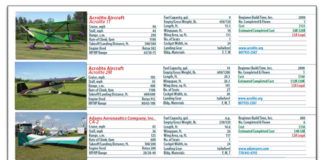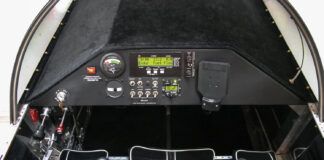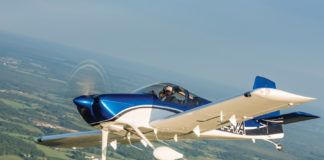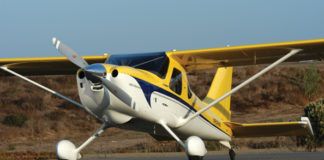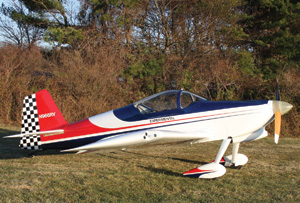 Richard Fazios Vans RV-6 My father and I purchased the RV-6 quickbuild kit and took delivery in 1997. After a year or so, we had the wings on and the engine was on the way. Then my father became ill and passed away in 2000. The airframe was done, but it still needed the wiring, plumbing, interior, instruments and paint. My friend Dwight said, Stop fooling around. Just bring that thing out here to the airport and put it together. Then more bad news. A fire at the hangar where wed been working melted the canopy. I was worried about the aluminum because if it had heated up too much, the temper would be lost. But it had an eddy current continuity test and, luckily, the temper was OK. Fast-forward to 2009. On January 10, the DAR signed off on it. The first flight was on January 19, with Dwight behind in his RV-4. The RV-6 climbed at full power like the proverbial homesick angel, hands off straight and level trimmed right from the start. Massapequa Park, New York |
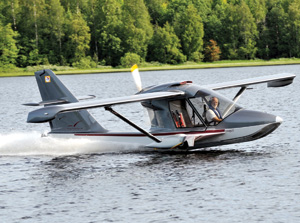 Lage Norbergs Seagull My two sons, Tomas and Staffan, and I have designed, built and successfully test-flown the two-seat LN-3 Seagull amphibian. The design started long ago, but full-time efforts over the last five years have completed the project. The Seagull was initially designed for the Rotax 912S but has flown 50 hours with the Jabiru 2200 on land, snow and water. The airframe is stressed +6/-3 G for aerobatics. The control responses are agile, and the airplane is a delight to handle. The excellent performance and outstanding view from the roomy cockpit are further reasons for it being a joy to fly. To say we are satisfied with our airplane is an understatement. Sundsvall, Sweden |
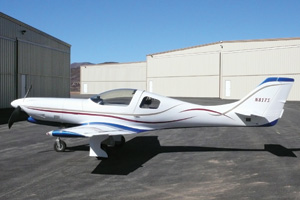 Jack Dysarts Lancair 360 N817S was started in 1999 and first flew in March 2007 after breaks from building because of military duty. It has a Superior XP IO-360 engine with Hartzell constant-speed prop, which required a 40-hour flight-test period. I had planned final paint for December 07, but after showing the plane to 40 other Lancair builders at a fly-in, I came home with a two-page list of changes I wanted to make and the admonishment, Don’t be in a hurry to paint it. Good advice. My wife, Carole, designed the paint scheme and chose the upholstery. Final paint was put on at Gold Medal Paint of Denver, and the plane was delivered in January 2009. The all-electric IFR panel includes a Garmin GNS 430 and Grand Rapids Horizon EFIS. The panel was assembled by Aerotronics. The aircraft met all performance expectations and is fun to fly. Special thanks to Jeff Michaels of Jetstream Composites and Erik Woods of EK Composites for their patience and advice, EAA tech counselor David Biesemeier and pilot Bill Mitchell, who demonstrated the aerobatic capabilities of the plane and provided excellent transition training. Steamboat Springs, Colorado |
![]()
BUILDERS SHARE THEIR SUCCESSES
Submissions to Completions should include a typed, double-spaced description (a few paragraphs only-250 words maximum) of the project and the finished aircraft. Also include a good color photograph (prints or 35mm slides are acceptable) of the aircraft that we may keep. Please include a daytime phone number where we can contact you if necessary. Also indicate whether we may publish your address in case other builders would like to contact you. Send submissions to: Completions, c/o KITPLANES Magazine, 203 Argonne Ave., Suite B105, Long Beach, CA 90803. Digital submissions are also acceptable. Send text and photos to [email protected] with a subject line of Completions. Photos must be high-resolution-300 dpi at a 3 x 5 print size is the minimum requirement.

